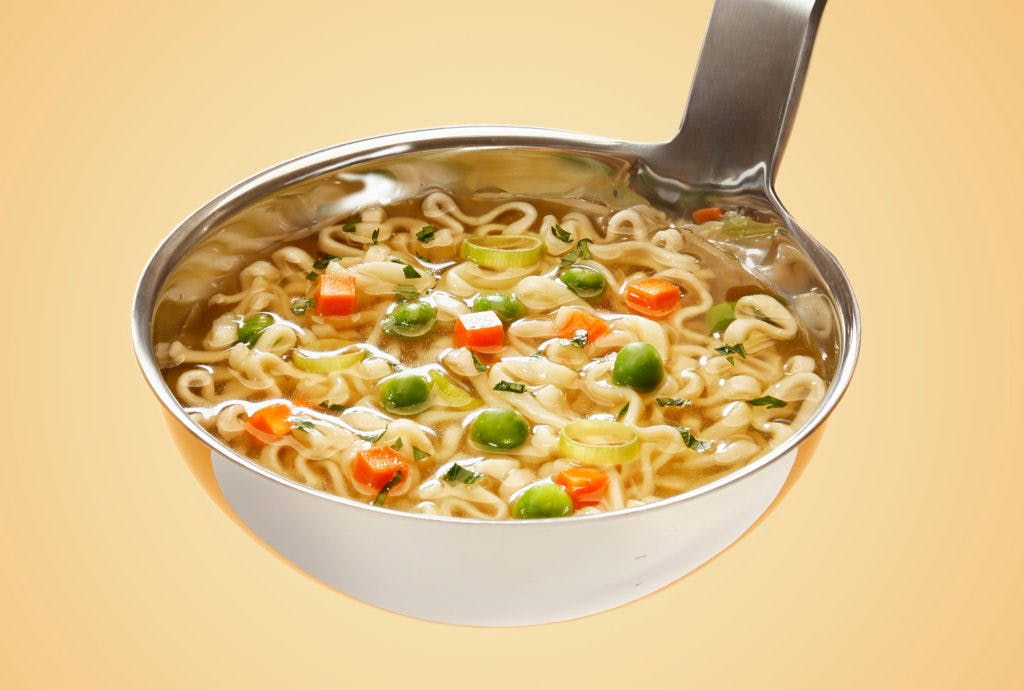How much does it cost to build a marketplace business?
Marketplace costs are a big question for an aspiring marketplace entrepreneur. This article helps you define your initial budget for getting your business off the ground.
Published on
Last updated on

How much does it cost to build an online marketplace? If you've read our practical guide on how to build an online marketplace, you know we recommend starting a marketplace with a low budget and building an MVP.
However, there's no single answer to what is an ideal first-year budget for a marketplace. The funding requirements for your marketplace depend on your target industry, marketplace type, and business goals. In this article, we will assume that your concept does not require industry-specific functionality from the platform and that you are not going head-to-head against a marketplace giant like Uber—one with billions of dollars in their war chest. (If you're interested in reading more about different marketplace funding requirements and funding sources, have a look at my complete guide to marketplace funding.)
Instead, you are tackling a fragmented market of small providers with a typical marketplace value proposition: offer the small providers an online presence, a solid invoicing tool, and more leads through the marketplace model. Meanwhile, your customers benefit from the ability to find all the providers from one place and easily compare them.
It's safe to assume that you will get zero revenue from your marketplace during its first year. Marketplace businesses are unpredictable, especially in their early days. Relying on potential future revenue will lead to problems. The main goal of your first year is to validate your business idea. If there is revenue, great—it means you have more resources and can move faster. However, if the concept ends up not working, you should be prepared to lose your initial investment.
When you are assessing the cost of doing something, you should always evaluate both the amount of time and money that is required. You can usually compensate for the lack of one by investing more in the other. If you have lots of money to spend, less time is needed, and vice versa.
We assume that your goal is to build a profitable marketplace business that will, eventually, provide a full-time income for the founder(s), and preferably for others as well. To be able to achieve this goal, we estimate that the following investment is required for the first year:
- $2,500 (around $210 per month, with some costs upfront)
- 20 hours of work per week.
This scenario assumes that you have a relatively small amount of money to spend but a lot of time. 20 hours of work a week for a year—about 1000 hours in total—would, of course, be worth quite a bit of money in wages.
This is not an insignificant investment. But at the same time, it is something that we believe most people in Western countries with full-time jobs should be able to achieve.
Next, let's see how to divide the marketplace costs between building a website and growing your business.
During your first year, the biggest marketplace costs will come from two main things: building your marketplace MVP and launching your marketplace.
Naturally, when you start making money with your marketplace, you will need to establish a legal company, get an accountant, and so forth. The cost of this process varies greatly by country, so we have left it out of this equation. Our general advice is only to spend time and money setting up the company when you have to and when you can be sure that the business is really taking off. During the early days, acting on a freelance basis and having some sort of arrangement for accepting small amounts of money should be enough.
As a general rule of thumb, you should spend money on things that would take you a huge amount of time when compared to the money invested. For instance, the cost of learning to code and building a marketplace platform from scratch is an extremely large time investment: the cost of building a marketplace from scratch is typically north of $50,000. The investment is probably not worth it: you could spend your entire time budget only to find out your audience needed something different. Buying a ready-made marketplace platform makes sense because it lets you save time, launch fast, and start learning about your audience.
Even if you know how to code, developing a marketplace platform from scratch is likely not the best use of your time. You want to launch your marketplace as quickly as possible, which is why we recommend using an off-the-shelf platform to build the first version of your marketplace.
The fastest and easiest way to start is with a Software-as-a-Service platform that allows you to create your site without your own server. The platform needs to satisfy the requirements of your minimum viable platform. Using a self-hosted platform might, at first glance, seem cheaper, but the costs that come from monitoring, logging, software updates, security certificates, and other technical tasks can be surprisingly high. This article by open-source developer Dan Moore explains how the costs of a self-hosted server can easily exceed those of a SaaS platform.
You can get the best of both worlds by using a hosted solution that also offers you a clear path to develop your platform further. This allows you to invest more in building custom features once you start scaling your business. For instance, Sharetribe offers a marketplace solution that is designed for starting and growing your business. It is ideal for launching your MVP completely no-code, but it is also infinitely extensible because of its API-based architecture. If you decide to take the Saas-enabled route, learn more about choosing the right marketplace software. And if you don't have developers on your team, read our articles on hiring a marketplace developer and describing your platform's requirements to them.
For example, let's assume you start with Sharetribe's Lite plan (learn more about the Sharetribe plans on our pricing page), which allows you to onboard users and test your marketplace idea with real transactions. After three months, once you gathered feedback from your first users, validated some hypotheses, and have seen some transactions on your platform, you upgrade to the Pro plan, which lets you white-label your marketplace and integration it with third-party services. That plan also allows you to use your own domain name, which can be bought separately from a provider such as Hover. Domains cost around $10 per year.
In terms of design, the standard Sharetribe setup is enough for your validation phase. However, adding a personal touch is important. This includes getting a great looking logo. We recommend creating a logo for your marketplace yourself for free. If your business scales, you might want to hire a professional logo designer and spend a bit more on your logo and brand identity, but during the validation stage, it's better to keep costs down.
In addition to a logo, you might want to spice up the design with photos relevant to your industry. After all, your users' first impressions really count. Since you are on a tight budget, Unsplash is a stock photo site with free photos from professional photographers. If you have a bigger budget, Stocksy is a great option.
- Sharetribe Lite subscription for 3 months (annual plan) – $297
- Upgrade to Sharetribe Pro subscription for 9 months (annual plan) – $1,791
- Custom domain for 12 months – $10
- Security certificate – included with Sharetribe
- Logo – free
- Stock images – free
- Total cost: $2,098
Aside from building the platform, some marketplace costs come from marketing. Out of the original $2,500 dollar budget, we only have $402 left. This is, however, not a problem. With marketing, there are many ways to compensate for the lack of money by putting in some manual work. Since you didn't spend much of your time budget on building the platform, you have plenty of time left.
A common way to do marketing with a limited budget is via content marketing—blogging. And as a marketplace founder, you're in a great position for content marketing. Leverage your own expertise in your field or invite suppliers to write for your blog. It's a win-win situation – you get highly knowledgeable keyword-targeted content, and the supplier gets visibility.
Another content marketing essential is a mailing list service. Mailchimp, for instance, is free up to 1,000 monthly emails sent.
Before you launch your marketplace, you should set up a simple landing page to create initial buzz and collect email addresses. The landing page should live in the same domain where your marketplace will eventually be. Launchrock is a great tool for building a landing page. It allows you to easily import the collected email addresses into Mailchimp. A white-label version of Launchrock costs $9 per month, and you will likely only need it for around three months.

You also need to measure your marketplace's success by tracking your marketing efforts. Are people actually visiting your site? Where do those visitors come from? A good, free tool to answer these questions is Google Analytics. It should cover your needs for the first year. However, make sure Google Analytics adheres to your area's privacy regulations before committing to it.
If you have a bigger budget and less time to spend on marketing, you could spend some money on Google Ads to buy demand or supply. If, however, you only have around $100 left in your marketing budget, this option makes no sense. $100 will not buy you a meaningful amount of traffic. Instead, you should do things that don't scale. Organize meetups for your early adopters, and use the money on refreshments. Print posters of your site and spread them around the neighborhoods you initially want to target. Pay a local publicist to get your site featured in local media—preferably online, so you can track the results of your investment. The right strategy really depends on the type of marketplace and the initial target audience.
All successful marketplace startups have required a significant time investment from their founder(s). This does not, however, mean that simply putting in lots of hours is all that is needed. You should aim for quality, not quantity. Try to identify the most important things you can do and focus on those.
The first year's goal is not to become a big business but to validate your concept as you go and gather an initial passionate audience. If you manage to find 100 fully engaged users, that's a great achievement.
You need to be patient. While you do want to validate your concept quickly, you should not give up too easily. Marketplaces are slow: it can take three years for them to really get going. The number one reason for startup failure is founders giving up. If you simply refuse to quit, you're way more likely to achieve your goal.
Start by validating your idea. Write down your assumptions, and spend the first month talking to people in your target group and gauging their interests.
If you get initial validation, build the Minimum Viable Platform. With Sharetribe, this can literally be done in one day. You will also want to buy a domain, create a logo, and set up a blog, mailing list, and social media sites. Once you have decided your idea is worth trying out, it makes sense to start blogging and being active on social media. This way, you can start building an initial audience even before launching your site. This "setup" stage should take no longer than a month.
Next up, it's time to start building supply. Depending on your idea, it makes sense to spend between one to three months in this phase. You need to have enough supply when your first customers come in. Remember to collect feedback constantly from providers as you onboard them and make adjustments as needed.
At the same time, keep blogging, tweeting, and building your initial audience. It might also make sense to attend local events during this period, spreading the word and collecting email addresses.
Once you have enough supply, it's time to start inviting customers. Don't go for a big-bang launch. Instead, invite a small number of beta testers from your mailing list, and ask them to provide feedback. Alternatively, you could go to an event and entice attendees to join your site. Be creative in figuring out how to find your early adopters. Pinterest founders went to random people in coffee shops and asked them to use the site in exchange for free coffee. If you notice most users hitting certain snags that prevent them from going through with transactions, fix them before launching.
When you launch, doing it locally at first is usually a good idea. Local positioning makes your concept more interesting to local media. This initial press helps your marketing launch.
After the launch, the rest of the year should mostly be spent talking to users. Figure out why they're using—or not using—your site. Find out what their problems are and how well their stories match your initial assumptions. Send them emails, set up Skype calls, and meet them in person whenever possible. As you learn something new, update your platform or marketing message accordingly.
After the first year, you should have achieved a basic level of liquidity in your marketplace. Transactions occur constantly, and you have a small but loyal group of users who keep coming back and getting value from what you're building. The marketplace, while not necessarily growing fast, is generating enough revenue to cover the marketplace costs. Liquidity is arguably the most important marketplace metric.
If you have not reached this state, it does not mean you should quit. You might not have found the right angle and need to continue trying out different marketplace growth tactics. But one thing is sure: something needs to be changed. You should examine your concept critically, asking yourself, "Am I really solving a big enough problem"?
Once you reach liquidity, it might be time to take things to the next level. If you are working alone, bringing on another person can be tremendously helpful. In the long term, running the business alone can be emotionally taxing. If you still have your day job, you should consider quitting to focus full-time on your marketplace. The question of outside funding—through crowdfunding or private investment—might also be on the table if you're not bootstrapping your marketplace.
Before giving up your day job, be sure to understand what kind of revenue is needed in order to support yourself. Even if you plan on raising money from investors, you should first try to achieve what startup guru Paul Graham calls ramen profitability: the smallest possible level of revenue that keeps you afloat financially. Of course, this level depends on your situation. If you are a student living in a college dorm, you can get by with less than if you have three kids and a mortgage. Nevertheless, reaching ramen profitability greatly increases your negotiation power as you are no longer forced to take an investment.

What does it take to reach ramen profitability with your marketplace business? Let's perform a simple example calculation using the figure Graham used in his article: $1,500 a month. If we look at all Sharetribe-hosted marketplaces, the average order value is $70, and the average commission 13.4%. If we use these figures as a basis, it means you would get $9.40 from each transaction, and would thus need 160 transactions per month to reach a monthly revenue of $1,500. That's just over 5 transactions per day. It may not sound like a lot, but a lot of work is needed before you can maintain this transaction amount week after week.
To quickly calculate how many transactions you need to achieve your goal and how different variables (such as average order value and the size of your commission) affect the situation, you can use this handy calculator. It's a good idea to perform such calculations early on to understand the challenge you are up against.
At Sharetribe, one of our three main purposes is to democratize platform ownership. In other words, we want to make it easy and affordable for anyone to build and run their marketplace. While not everyone on the planet can invest $2,500 and 20 hours per week, far more people have the possibility to start their own online marketplace business than ever before. In fact, if you are reading this, chances are that you have all the required resources to build a marketplace.
If you have enough money, you can take certain shortcuts, and you might not need to invest as much time. If you are short on money, you can compensate for it by investing more time.
Most marketplace businesses don't fail because they lack the resources to keep going. Most of them fail because the founders lose faith. In some cases, this is warranted; not every marketplace idea is a good one. However, in many cases, those who patiently keep trying and iterating will eventually succeed.
We hope this article gives you a good overview on how to get started with limited resources and how to spend them wisely. Good luck building your business!
You might also like...

Marketplace funding: The complete guide
Struggling with funding your marketplace? This guide helps you decide how much marketplace funding you need �– and when and where to source it.

Marketplace software: How to compare and choose the best solution
There are dozens of online marketplace software alternatives to choose from. Learn how to make the right choice for your marketplace idea.

Why you should launch your marketplace early
‘Time is money’, and other teachings to inspire you to take the plunge and launch your marketplace as soon as you can.
Start your 14-day free trial
Create a marketplace today!
- Launch quickly, without coding
- Extend infinitely
- Scale to any size
No credit card required
